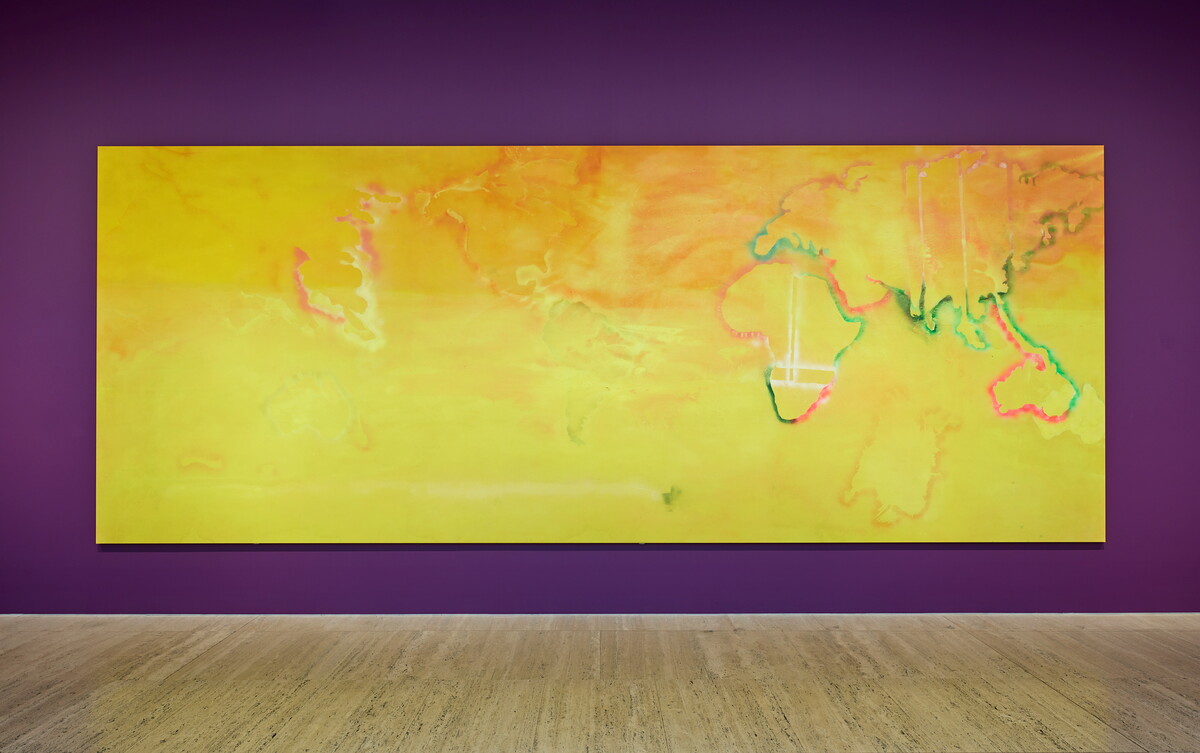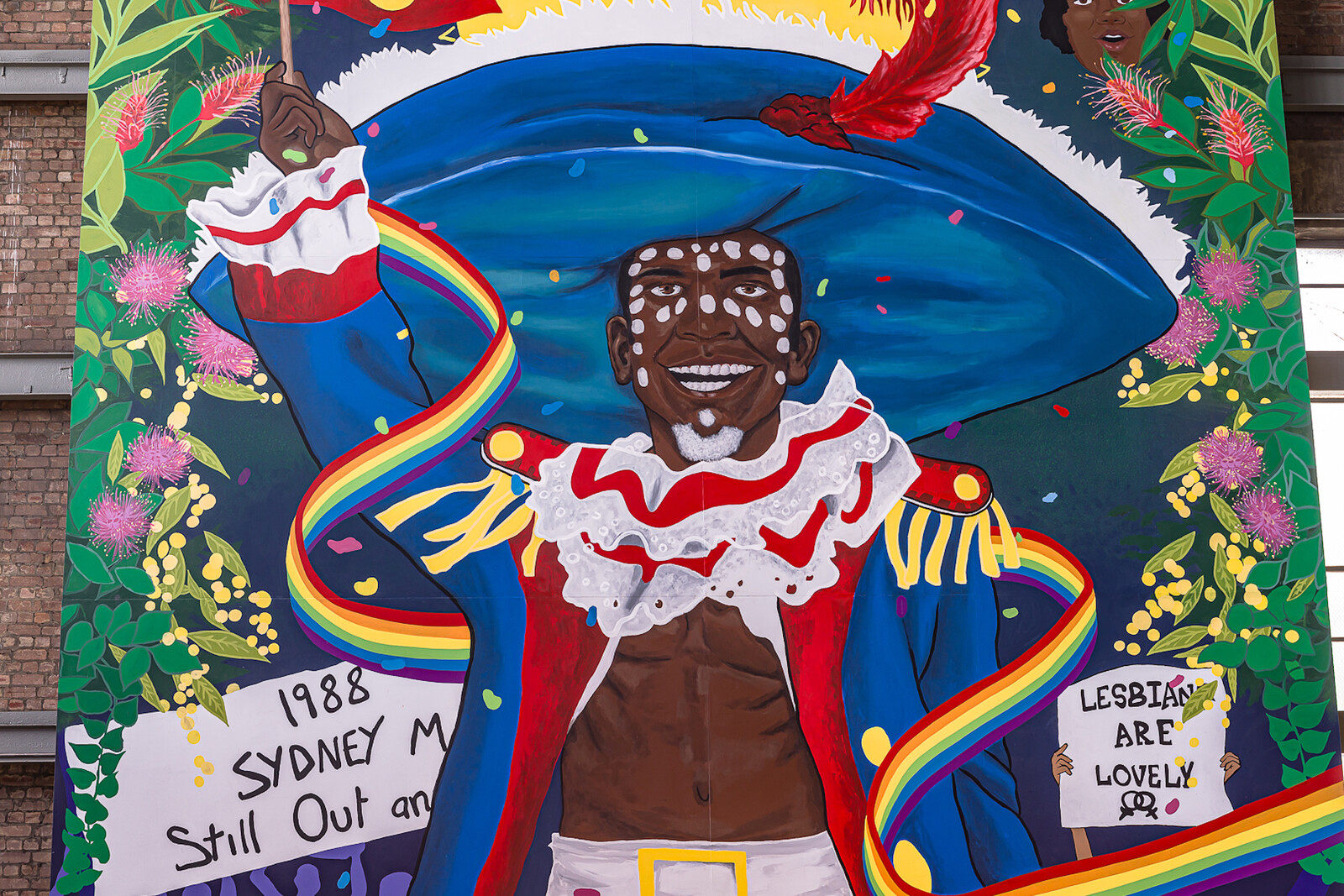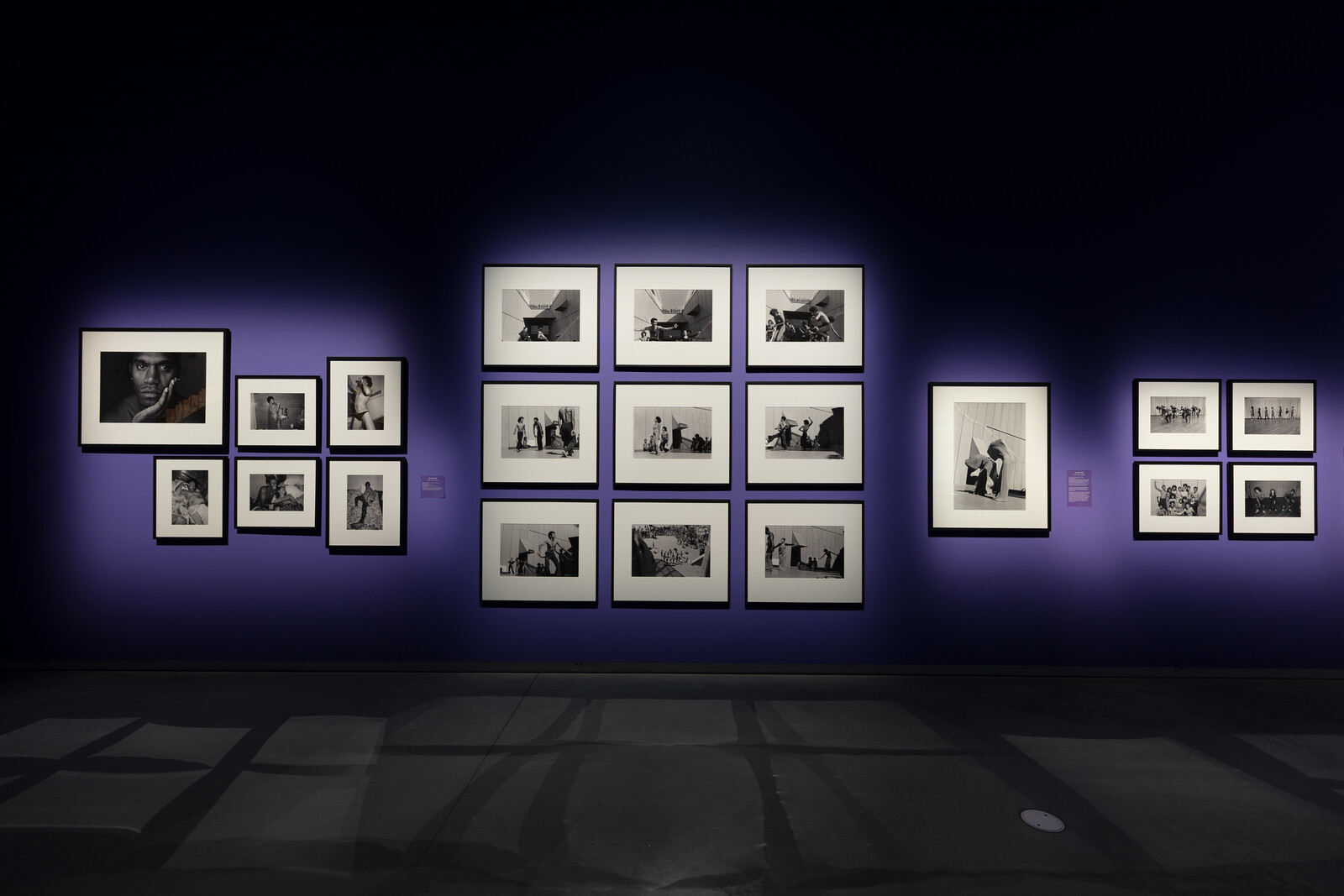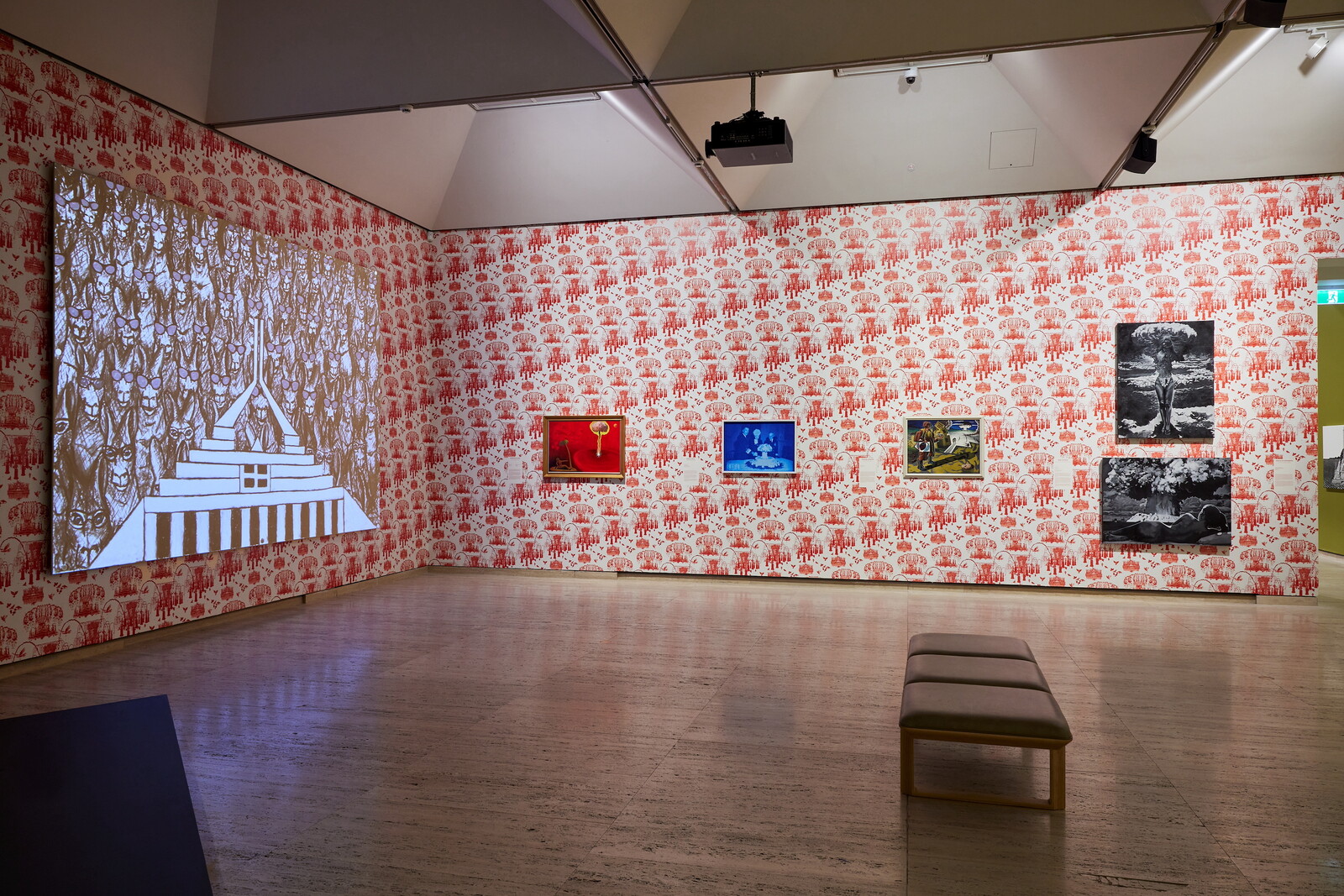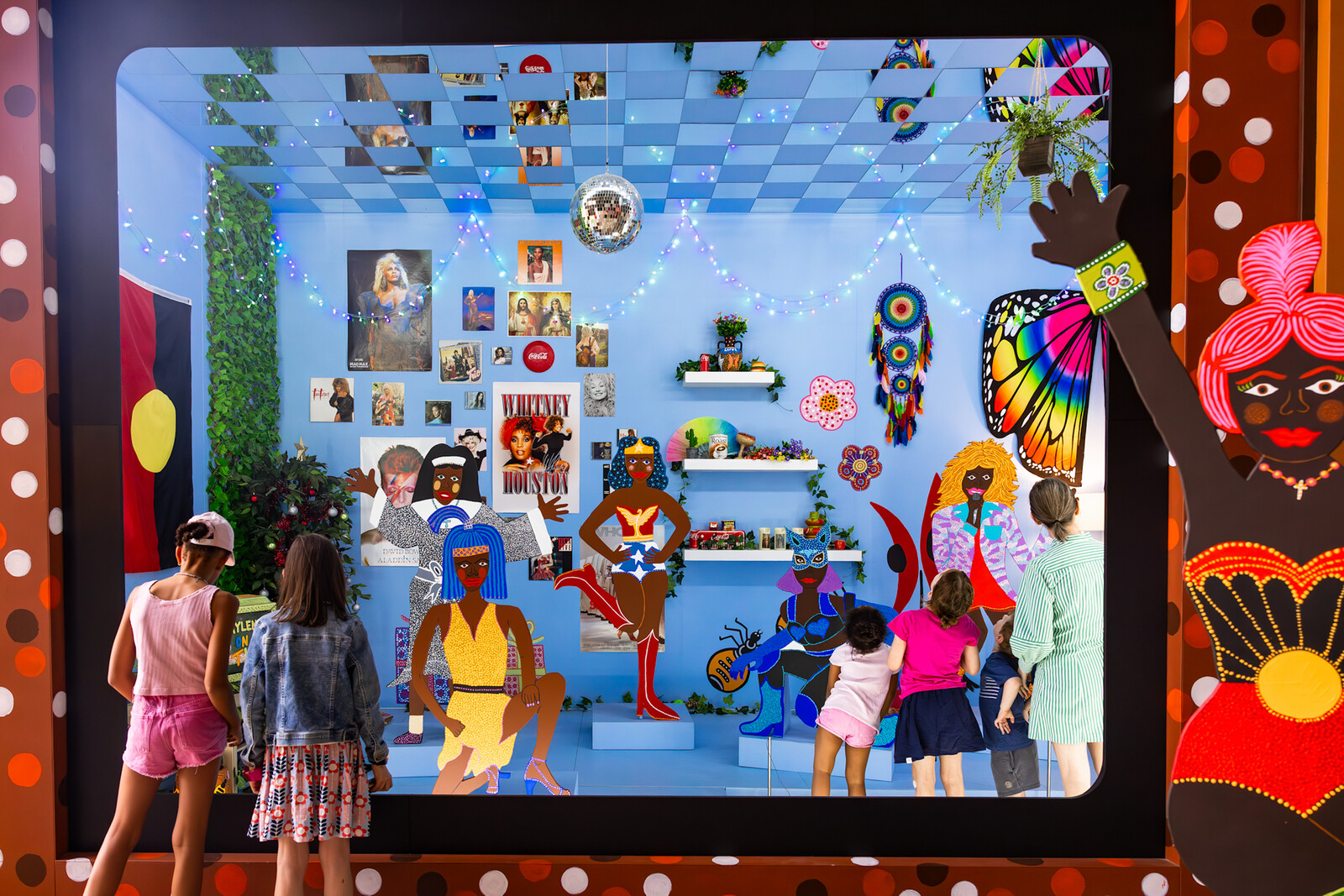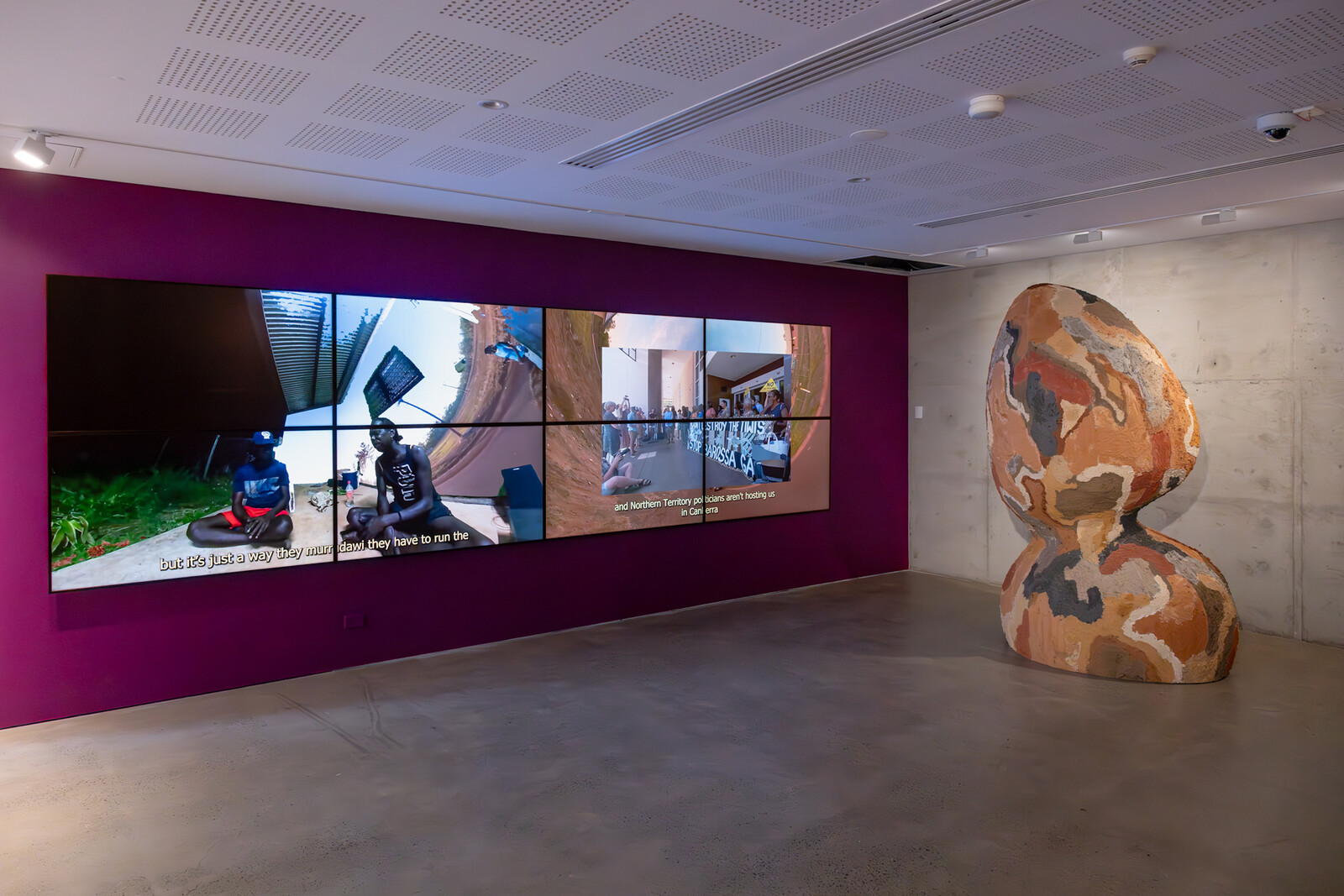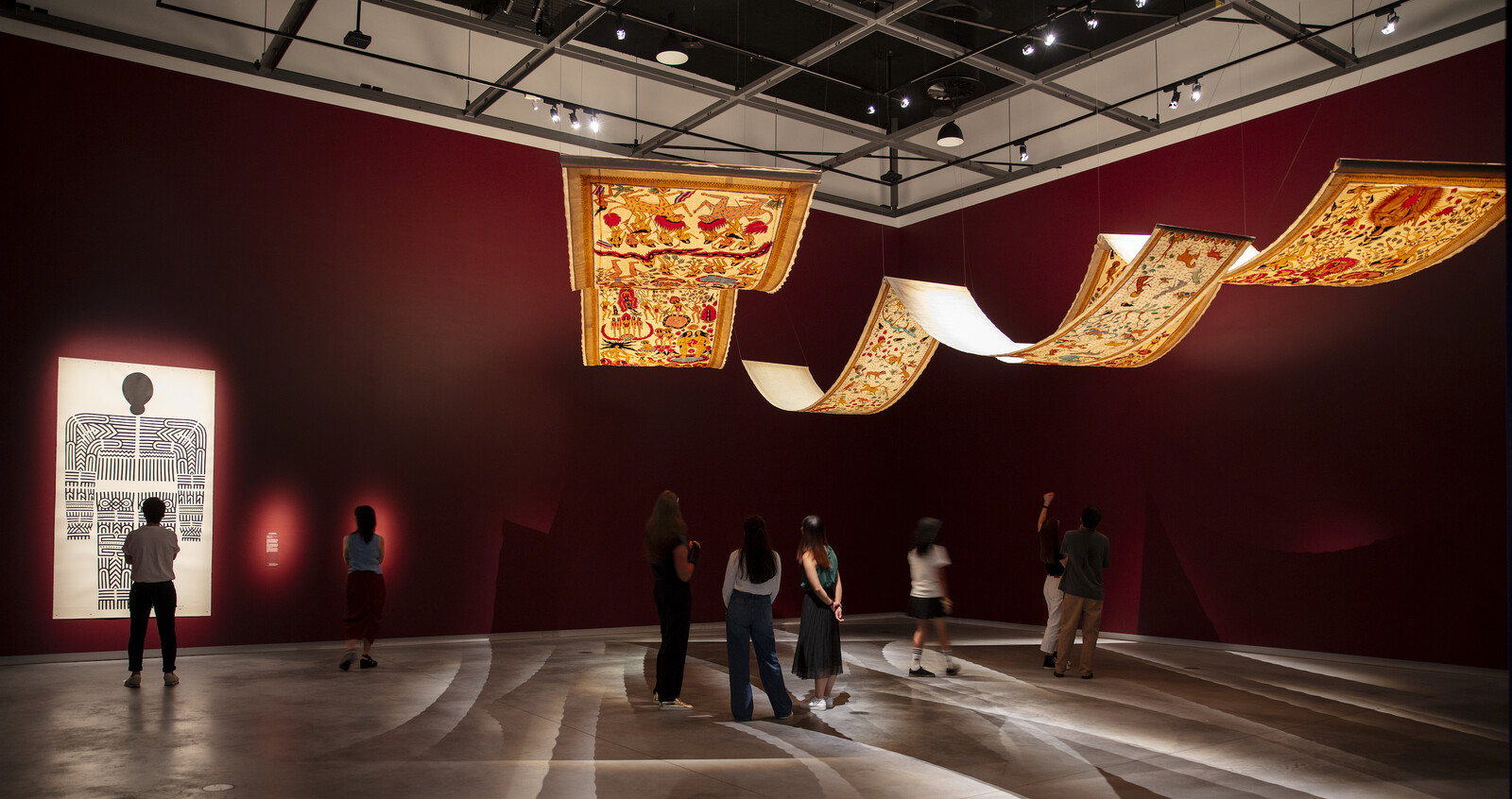March 9–June 10, 2024
If “Ten Thousand Suns” has a patron saint, it’s Malcolm Cole, an Aboriginal and South Sea Islander dancer who died from HIV/AIDS in 1995. On view at Chau Chak Wing Museum—one of six venues across the city—Sydney-based photographer William Yang’s documentary portraits of Cole and the Aboriginal Islander Dance Theatre in the 1970s gleam with the young man’s grace. Next to them, paintings by Martin Wong, who died from the same illness in San Francisco in 1999, venerate working and incarcerated peoples in the artist’s trademark gravelly facture. The biennial probes the interconnectedness of different liberation movements—as spotlighted in the affinities shared by two Chinese diasporic portraitists, for instance, or personified within lives such as Cole’s.
In 1988, during the nationwide bicentennial of the First Fleet’s landing on the Eora land that they named Sydney, Cole helped to design the first Aboriginal float at the city’s Gay and Lesbian Mardi Gras, in which he paraded in drag as British naval officer Captain Cook. Yuwi, Torres Strait, and South Sea Islander artist Dylan Mooney’s mural Malcolm Cole – larger than life (2024) at White Bay Power Station memorializes the jubilant dancer, his face painted with ochre, in a sassy, wide-brimmed Royal Navy hat, waving the Australian Aboriginal flag with its central golden sun.
One floor below, Yankunytjatjara painter Kaylene Whiskey, in her mise-en-scène Kaylene TV (2023), places life-size cut-outs of Black women superheroes invented by the artist, alongside the rock and country legends Cher and Dolly Parton, in a gleeful analog television set decorated with dots recalling Aboriginal dotting techniques. Next to it, Alberto Pitta’s rich, patterned fabrics investigate the visual culture of Afro-Brazilian street bands. A former coal plant built in the 1910s, White Bay Power Station testifies to the extractivism that drives the enduring dispossession of Australia’s First Nations. Here, the spirit of the carnivalesque—Mikhail Bakhtin’s term for artworks that shimmer with dissenting gaiety—takes center stage, hinting at the instability of the colonial architecture.
Since the highly contested survey “Magiciens de la terre” at Paris’s Centre Pompidou in 1989, reflections on globalization, and efforts to shift this paradigm, have been a feature of the biennial circuit. “Ten Thousand Suns” seems to tack away from the global as an organizing principle and to search for other ways of describing space, at once more fragmentary and more pluralistic. Aumoana (2023–24), a project initiated by Nikau Hindin, conveys this beautifully. Hindin, a Māori artist dedicated to reviving the craft of aute (bark cloth) making, invited five other makers to create patterned cloth with her, working together as the Aumoana Group.1 The cloths are woven from the bark of the paper-mulberry tree, harvested from Hawai‘i, Aotearoa, Tonga, and Fiji, the homes of the collaborating artists. The ocean-spanning artwork maps the collective’s shared Austronesian heritage, which long predates state borders. It reminds us that the world contains many worlds, and that artworks can teach us how to navigate between them.
While distinct themes emerge at certain venues, curators Cosmin Costinaș and Inti Guerrero tend not to spell these out in thesis-driven wall texts, but let the artworks make the arguments. One room at the Art Gallery of New South Wales addresses the atomic bomb. Breda Lynch’s Cake Bomb (2016–21), an oil on Masonite reproduction of a notorious Life magazine photograph showing U.S. Navy Admiral William H.P. Blandy and his wife slicing a mushroom cloud cake after the Operation Crossroads tests at Bikini Atoll in 1946, is hung on Saule Dyussenbina’s wallpaper Achievements of National Economy, Fountain of Friendship of Peoples of the USSR (Moscow, Russia) (2023). In it, the titular fountain in the Soviet capital mushrooms like an explosion, alluding to the deep-rooted anti-communism that fired the Cold War arms race. Nearby, Waanji artist Gordon Hookey’s animated video Terraist (2014) features an army of kangaroos protesting under a beaming sun, and likens the imperial doctrine of terra nullius to terrorism. The arrangement dissects the atomic, carbon, and colonial apocalypses that have come to define the modern Pacific, and to incite waves of solidarity across the region. As Kathy Jetn̄il-Kijiner, the Marshall Islands poet, writes, “we are nothing without our islands.”2
At UNSW Galleries, Yangamini’s mixed-media installation Mapurtiti Nonga (Evil Ass Dreaming) (2024) includes a video documenting the collective’s fight against the oil and gas company Santos’s Barossa pipeline in the Tiwi Islands, as well as three earthen butt plug sculptures. Symbolically, these sculptures are meant to plug the extraction of gases from the ground, and to stop the colonizers from speaking out their backsides, but of course they are also instruments of queer ecstasy. In this exhibition—one to cruise as well as to study—sobriety and joy are bedfellows. Even one sun can burn in ten thousand ways.
The Aumoana Group comprises of Ebonie Fifita-Laufilitoga-Maka Fungamapitoa (Tonga, Aotearoa New Zealand); Hina Puamohala Kneubuhl Kihalaupoe (Maui, Hawai‘i); Hinatea Colombani (Arioi, Tahiti); Kesaia Biuvanua (Moce, Lau, Fiji); and Rongomai Grbic-Hoskins (Te Rarawa/Ngāpuhi, Aotearoa New Zealand), as well as Hindin (Te Rarawa/Ngāpuhi, Aotearoa New Zealand).
Kathy Jetn̄il-Kijiner, Iep Jaltok: Poems from a Marshallese Daughter (Tucson: University of Arizona Press, 2017), 67.
